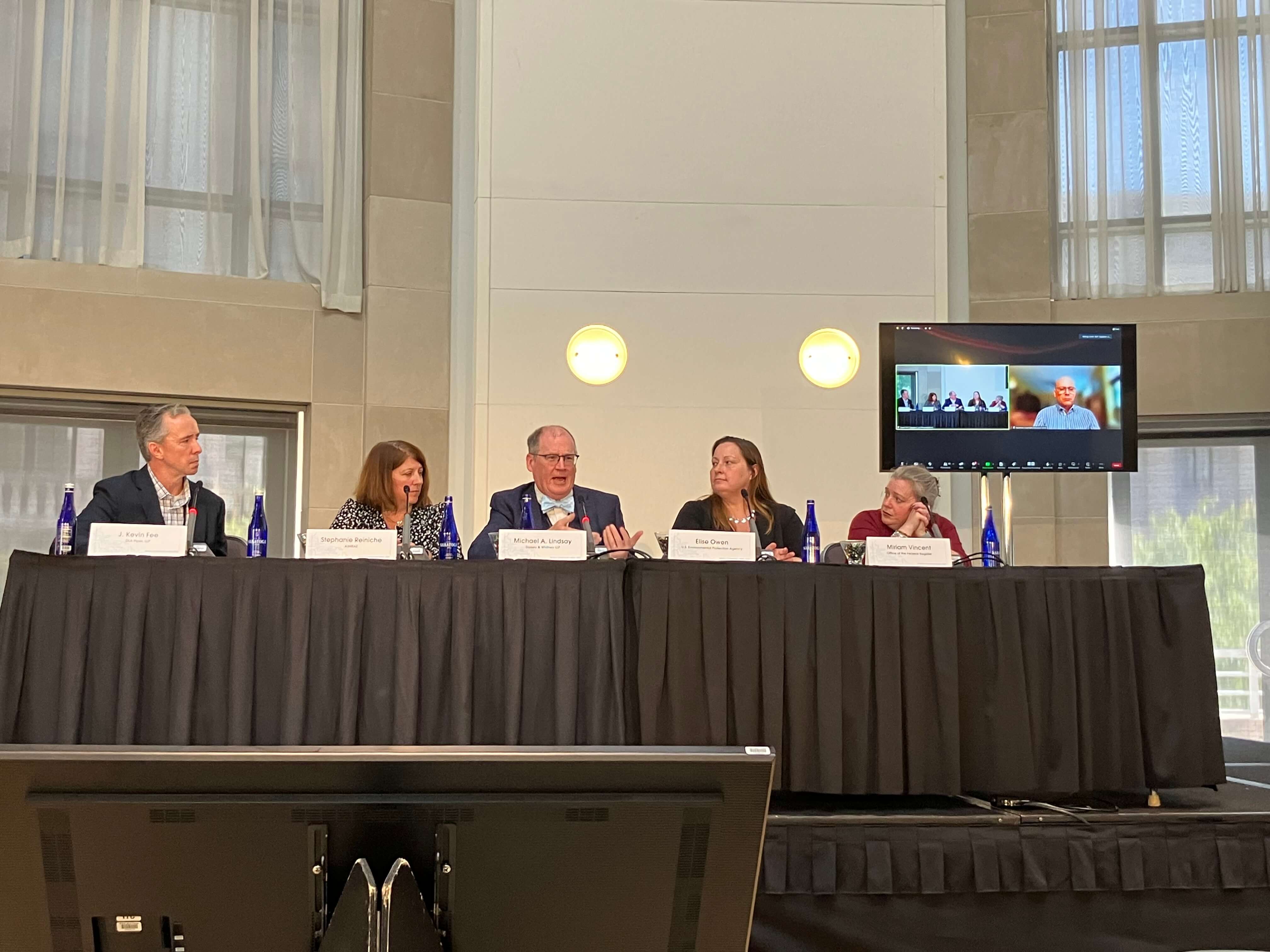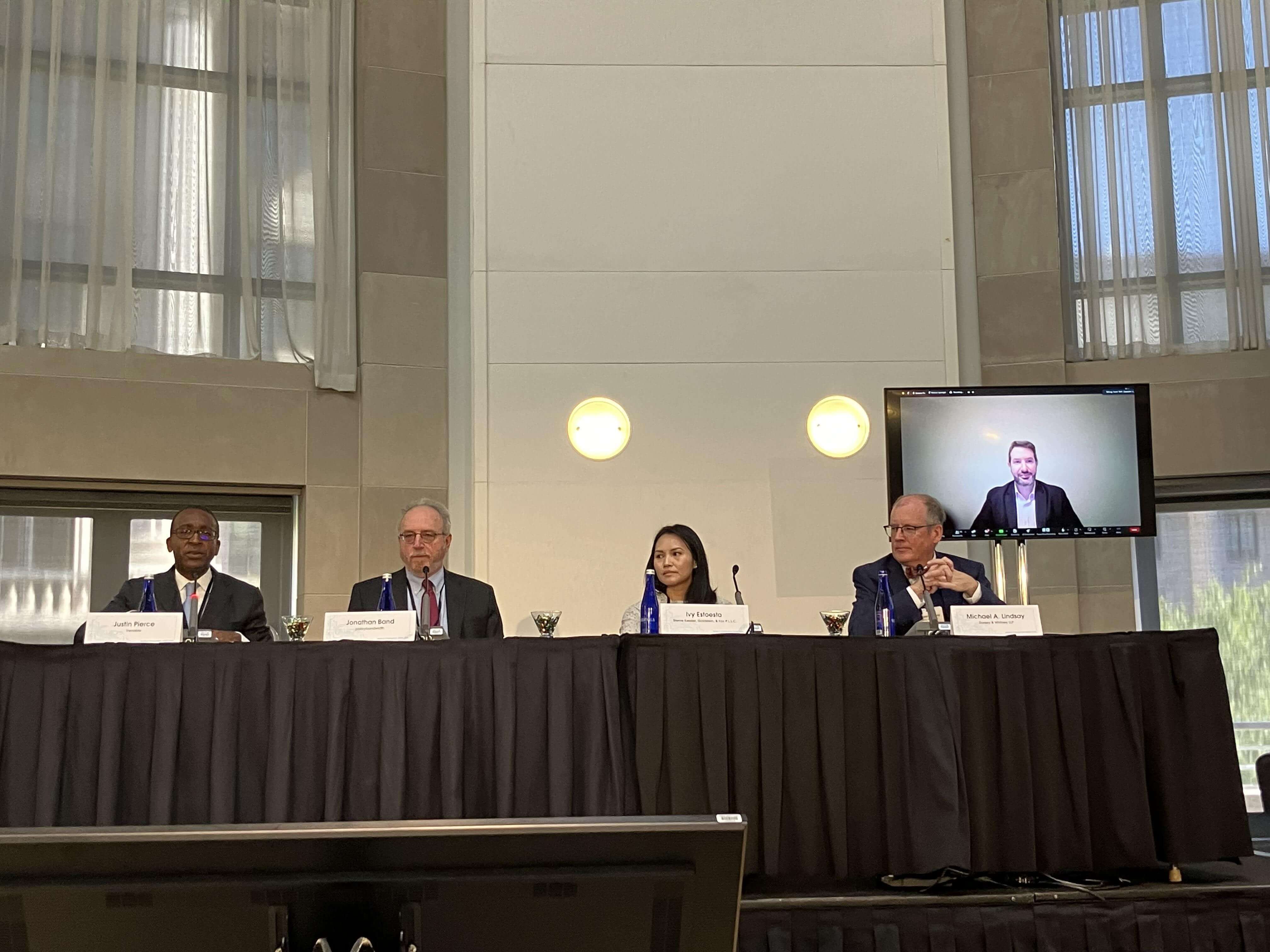
10/13/2023
The American National Standards Institute (ANSI) brought together scholars, legal experts, and key stakeholders on October 12 for its annual Legal Issues Forum (LIF), part of ANSI’s World Standards Week series of events. This year’s LIF was devoted to two copyright issues: first, whether copyrighted standards that are incorporated by reference (or “IBR’d”) into law become fair game for use by third parties; and second, whether using generative AI tools to develop standards could diminish copyright protection for those standards.
The forum began with keynote remarks from Cary Coglianese, professor of law and political science, and director, Penn Program on Regulation, at the University of Pennsylvania. Professor Coglianese spoke about the unique interrelationship between technology, standards, and the law, explaining how standards drafted by standards developing organizations (SDOs) drive changes in the law in a number of unanticipated and important ways—particularly when technology is introduced into that equation.
The day’s first panel discussed “What SDOs Need to Consider as the Incorporated by Reference (IBR) Legal Landscape Changes.” Moderator J. Kevin Fee, Esq, partner, DLA Piper, LLP, provided an overview of what it means for a standard to be incorporated by reference, and the current state of the law as it relates to the copyrightability and fair use of IBR’d standards, including the recent DC Circuit Court decision in ASTM vs. Public.Resource.Org, Inc. Stephanie Reiniche, director of technology, ASHRAE, spoke from an SDO’s perspective about the potential impact of the ASTM decision on third-party use of IBR’d standards and provided insightful ways how SDOs could preserve and protect their copyright. Michael A. Lindsay, partner, Dorsey & Whitney LLP, brought up the proposed Pro Codes Act, including how much and what kind of public access to IBR’d standards would be deemed sufficient under the proposed legislation. He also addressed possible alternative IBR models for SDOs—for example, providing more limited content from a standard for IBR purposes or segregating copyrighted standards information in separate guides or recommendations. Elise Owen, standards executive, U.S. Environmental Protection Agency (EPA), spoke on how the EPA uses and participates in standards development, and the importance of IBR to an agency’s regulatory functions. Miriam Vincent, acting director of legal affairs and policy, Office of the Federal Register (OFR), addressed the OFR’s role in IBR, explaining that an Incorporation by Reference Handbook guides federal agencies in maximizing their reliance on voluntary consensus standards and instructs how best to use incorporated standards. Roy Kaufman, managing director, business development and government relations, Copyright Clearance Center (CCC), spoke on the potentially harmful effects or consequences that might emerge should SDOs cease developing voluntary consensus standards as a result of the recent case law.
The afternoon panel explored “What are the Copyright Implications of Using AI to Develop Standards?” Moderator Justin Pierce, Esq., partner and co-chair, intellectual property division, Venable, engaged attendees with a sample standard written by generative AI. The result revealed text with a scope, terms, and many other elements formatted in a manner that resembled voluntary consensus standards. He used this exercise to demonstrate the ease with which generative AI could be employed to write standards that may not necessarily be accurate, reliable, or subject to copyright protection. Jonathan Band, copyright and policy lawyer, policybandwidth, discussed three copyright issues implicated by generative AI: Does ingestion for training AI constitute infringement? Does AI output infringe copyright? Is AI output itself copyrightable? He noted that the answer may be different in different jurisdictions. Ivy Estoesta, director, Sterne Kessler, Goldstein, & Fox P.L.L.C., discussed copyrightable aspects of AI-generated works, and provided tips on how to increase the likelihood that those works would be deemed copyrightable; she provided examples of how creators could add a human touch, and advised that when filing with the U.S. Copyright office, an applicant should specify which portions of a work were generated by AI. Michael A. Lindsay, who participated in both panels, spoke on the objectives and financial sustainability of SDOs and how the benefits of copyright law help SDOs meet those objectives, as well as the ways those objectives are complicated by using AI in the standards development process. Hussain Hadi, head of publishing, International Organization for Standardization (ISO), addressed how ISO has responded to AI, offered predictions for what’s to come, and spoke on the work of ISO/IEC JTC 1, SC 42, Artificial Intelligence.
ANSI is very grateful to all of the LIF participants for their enlightening presentations regarding how these cutting-edge issues complicate the future of copyright protection for voluntary consensus standards.
Materials from ANSI’s Legal Issues Forum, including presentation slides, will be made available on ansi.org in the coming weeks.

Panel 1: What SDOs Need to Consider as the Incorporated by Reference (IBR) Legal Landscape Changes

Panel 2: What are the Copyright Implications of Using AI to Develop Standards?